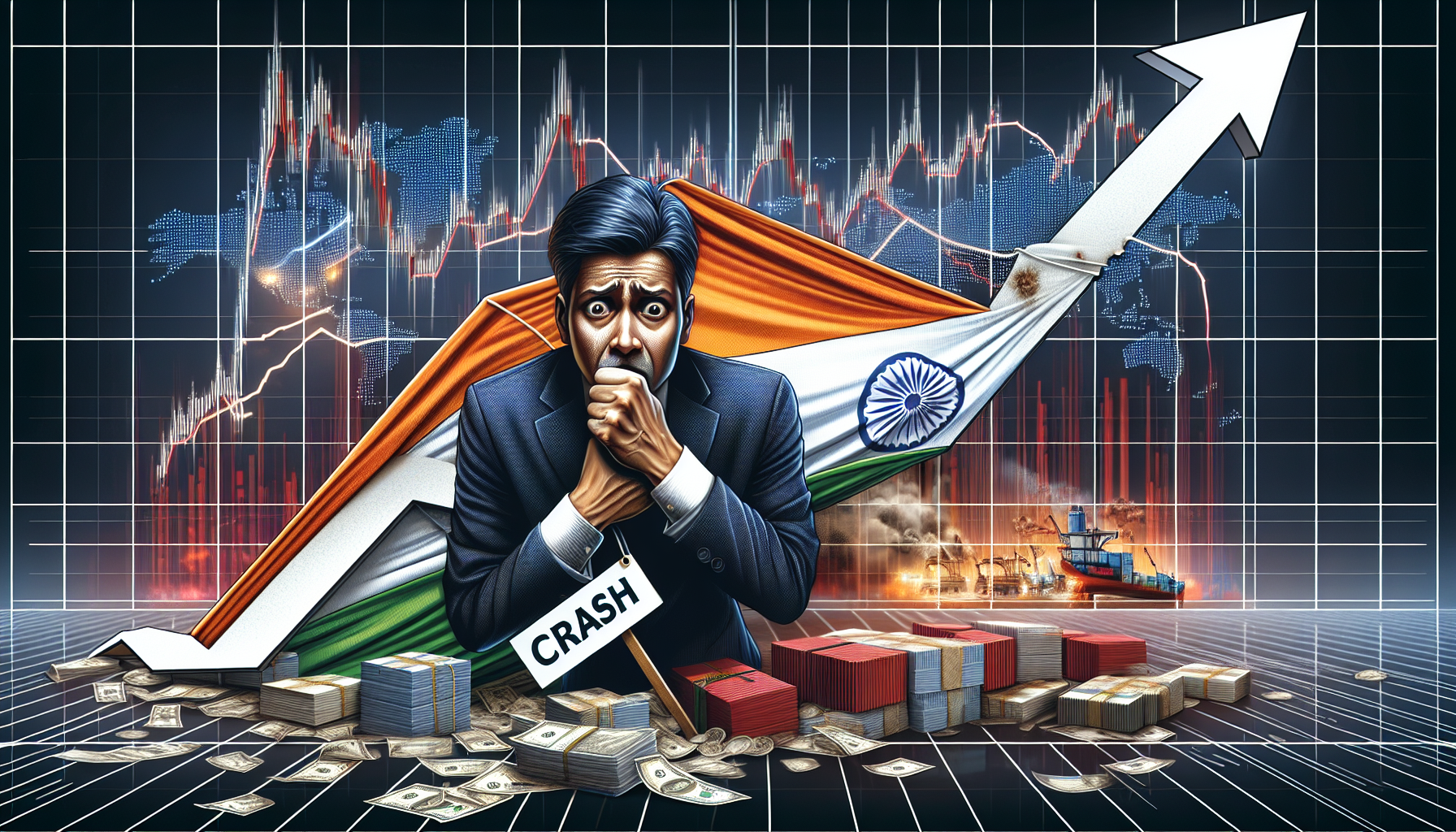
tl;dr
The World Bank warns that U.S. tariffs on Indian exports could slow South Asia’s growth in 2026, threatening regional economies reliant on India’s trade and investment. India’s response includes tax cuts and infrastructure plans, but the ripple effects could devastate neighboring nations.
**World Bank Warns U.S. Tariffs on Indian Exports Could Slow South Asia’s Growth in 2026**
The World Bank has issued a cautionary note about the potential economic repercussions of newly imposed U.S. tariffs on Indian exports, warning that they could weigh on South Asia’s growth in 2026. While the region has shown resilience so far, driven by robust public investment, the report highlights growing concerns over escalating trade tensions and their long-term impact.
In its latest *South Asia Development Update*, the World Bank projects that the region’s economic growth will decelerate from 6.6% in 2025 to 5.8% in 2026. This downgrade underscores the challenges posed by rising trade barriers, particularly the U.S. tariffs on Indian goods, which are expected to disrupt export performance and dampen growth. The report includes India, Bangladesh, Sri Lanka, Nepal, Bhutan, and the Maldives.
**U.S. Tariffs Hit India’s Labour-Intensive Sectors**
The slowdown is largely attributed to heightened trade tensions between the United States and India. Earlier this year, U.S. President Donald Trump announced a 50% "import tariff" on nearly half of India’s exports, one of the most severe tariffs ever imposed on a trade partner. These tariffs target approximately $50 billion worth of goods, with India’s labour-intensive industries—such as textiles, gems and jewellery, leather goods, and shrimp—facing the brunt of the impact.
These sectors, which rely heavily on the U.S. market (accounting for about 20% of India’s total exports), are particularly vulnerable. Around 75% of Indian goods shipped to the U.S. are now subject to these tariffs, according to the World Bank. While India’s economy remains supported by government spending and domestic demand, the report warns that the tariffs will gradually erode growth from mid-2024.
**India’s Response: Tax Cuts and Infrastructure Push**
In an effort to mitigate the fallout, India’s government has implemented a sweeping tax overhaul, the largest since 2017, slashing duties on goods ranging from shampoos to automobile parts to stimulate domestic consumption. Prime Minister Narendra Modi’s administration has also prioritized infrastructure development, investing in roads, railways, and energy projects to spur private investment and strengthen economic foundations amid global headwinds.
Despite these measures, the World Bank has revised India’s growth forecast for the current fiscal year (through March 2026) upward to 6.5% from 6.3%, but lowered its projection for the following year to 6.3%, citing the drag from tariffs and weaker global demand.
**Regional Ripple Effects**
India’s economic slowdown is expected to reverberate across South Asia, where it accounts for over 75% of the subregion’s GDP. Neighboring countries like Bangladesh, Nepal, and Sri Lanka face significant risks. For instance, Bangladesh’s textile and garment exports—critical to its economy—could see reduced demand for intermediate goods supplied to India. Sri Lanka, already grappling with a financial crisis, may suffer from diminished trade and tourism ties with its largest neighbor. Remittances and export earnings for Nepal and Bhutan, which are closely linked to India’s economy, could also decline.
The World Bank emphasized that the slowdown in Indian exports would disrupt regional supply chains, transportation networks, and trade services, underscoring the need for economic diversification.
**Call for Trade Diversification and Regional Cooperation**
Economists recommend that South Asian nations reduce their reliance on traditional markets by expanding exports to emerging economies in Africa, Southeast Asia, and Latin America. Investing in value-added industries and enhancing regional integration—through collaboration in technology, green energy, and digital trade—could help mitigate external shocks and open new opportunities.
India’s Finance Minister, Nirmala Sitharaman, has pledged continued support for industries through capital spending, credit access, and innovation, signaling the government’s resolve to navigate the challenges.
As South Asia braces for potential economic headwinds, the World Bank’s report serves as a stark reminder of the region’s interconnectedness and the urgency of proactive strategies to safeguard growth. The path forward, it suggests, lies in diversification, resilience, and deeper regional collaboration.